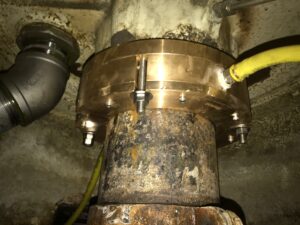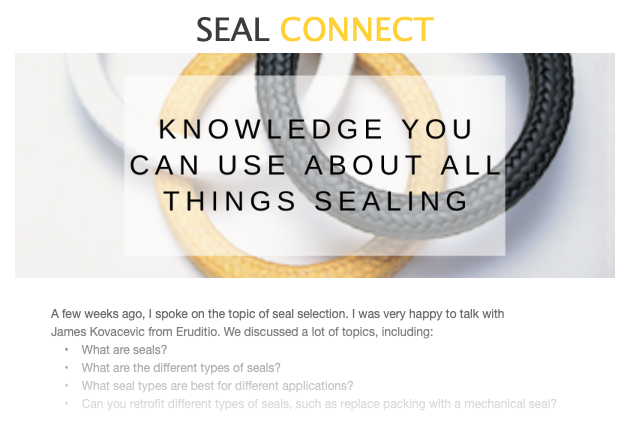Air Seals: What You Need To Know

Air seals are a new solution in pump sealing technology. Air Seals are designed specifically for pumps in non-hazardous services. The design target was reducing water usage and product dilution, eliminating leakage, making it easy to install, maintenance-free, and, if installed and operated properly, will exceed the life of anything previously designed, in excess of 100K hrs. To achieve this standard, the seal had to be impervious to:
- Misalignment, regardless of its source
- Off-design point operation
- Cavitation, dry running conditions
- Intermittent operation
- Anything that forces a pump to go offline
Description: The SAS is a non-contact, tandem sealing system designed for non-hazardous services.
System Requirements: The SAS with water flush is an option depending on the service. Air pressure is set at 10psi over flush water pressure.
SAS Configuration: Split and Solid designs
Construction Material: Bronze/316ss/Viton Elastomers/Thermax 945 throttle.
The split SAS is designed for ease of maintenance and in-service upgrades to existing equipment. Split designs are preferential when initial cost is an issue, i.e., project pricing, solid seals are a great choice. Additionally, because there’s no mechanical friction, the SAS consumes no power, coupled with a relative reduction in water consumption, leakage, and product dilution. The cost of implementation is significantly less than any technology that has come before it.
Named the SEPCO AIR SEAL, a ‘total system approach’ was used in the design process, considering every system condition, including human error, that can affect the seal’s performance. The SAS be packaged with SEPCO’s EXP Bearing Isolators to prevent premature bearing failure and complete the SEPCO Total Pump Reliability Package. The EXP is the most effective bearing isolator available on the market. Case studies have demonstrated superior performance to all other available technologies. Initially, most EXPs were sold as solutions for applications where our competitors’ products have performed poorly. Our competitor products were experiencing consistent premature bearing failures. This product is built to run efficiently in the harshest conditions. The SAS performs exceptionally well in any abrasive environment.
The SAS’s working principle involves using compressed air or gas to create a circumferential air barrier, creating a shaft seal containing the product being pumped.

Key Features and Benefits of the SAS:
Contaminant Exclusion: Air seals effectively prevent solid particles from entering sensitive equipment or processes, reducing the risk of wear, damage, and downtime.
Low Friction: Unlike mechanical seals or packing, air seals introduce minimal friction, making them particularly suitable for abrasive products that could cause wear in conventional sealing methods.
Environmentally Friendly: Air seals do not require lubrication or sealing fluids, making them environmentally friendly and reducing the risk of contamination in the process.
Adaptability: Air seals can be custom-designed to fit different equipment and machinery configurations, making them versatile for many handling applications.
Maintenance Benefits: The SAS is a zero-maintenance seal, no adjustments are necessary, and the only requirement is maintaining the design point pressure. Air seals typically have longer or no maintenance intervals compared to mechanical seals or packing, reducing the need for frequent replacements and associated downtime.
Lower Operating Costs: The lower maintenance requirements and reduced wear lead to cost savings over the operational life of the equipment. The SAS is a non-contact seal and does not consume power other than from the required air supply.
Safety: Air seals can help maintain a cleaner and safer working environment by preventing the escape of hazardous particles from the process.
It’s important to note that air seals may only be suitable for some applications, and their effectiveness depends on factors such as air pressure, air quality, and the characteristics of the slurry being handled. Proper engineering and design considerations are necessary to ensure the air seal system’s compatibility with the specific slurry handling process.
For applications involving slurries, it’s advisable to work with experienced engineers or sealing specialists to select the most appropriate sealing solution, taking into account the specific characteristics of the slurry and the operational requirements of the equipment.
Looking for a Sealing Solutions Provider?
SEPCO has sealing solutions for many applications, even those with the strictest standards and the most challenging environments. We have decades of experience in providing solutions across multiple industries. We can help. Check out our website to browse all of our products.
 SEAL CONNECT
SEAL CONNECT Find Your Sealing Solution
Find Your Sealing Solution